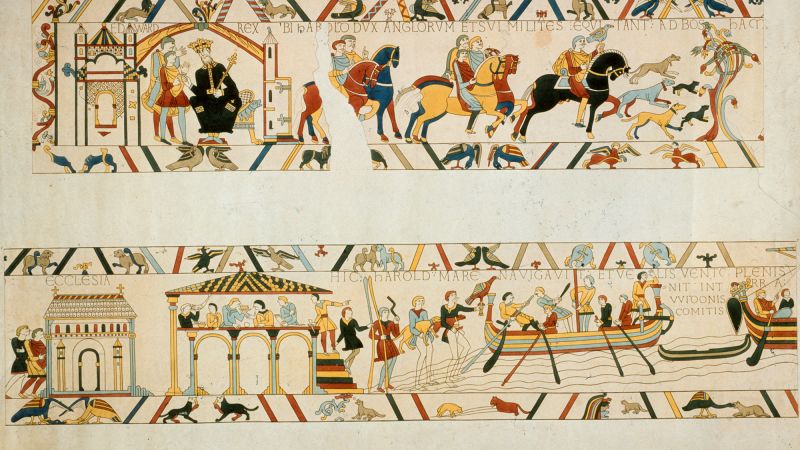The Bayeux Tapestry, a revered piece of medieval artwork, captures the events that led to the Norman conquest of England in 1066. Spanning a remarkable length of 68.3 meters (approximately 224 feet), the tapestry intricately portrays scenes such as William, Duke of Normandy, and his forces defeating Harold Godwinson, the last Anglo-Saxon king, at the famous Battle of Hastings. The tapestry itself is not just a decorative piece; it serves as a crucial narrative that intertwines history with art, holding numerous mysteries regarding its creation and the identities of those depicted within it. Among these mysteries, researchers have made strides in uncovering the historical significance of one particular location illustrated within the tapestry: Harold’s residence in Bosham, England.
Recent archaeological investigations have aimed to ascertain the exact site of Harold’s palace, which is featured prominently in the tapestry—once during a lavish feast before he set sail to France and again upon his return. A research team comprising archaeologists employed a blend of traditional and modern methodologies to establish this site’s location. The results of their efforts were published on January 9 in An Antiquaries Journal, shedding light on this key historical figure and his environment.
Dr. Duncan Wright, a senior lecturer in medieval archaeology at Newcastle University, emphasized the importance of correlating the artwork with real-life locations. This realization enhances our understanding of the tapestry, showcasing it not merely as a piece of visual art, but rather as a historical document that recounts significant events and places. The team utilized various techniques to confirm their suspicions regarding the site, including ground-penetrating radar to analyze potential buried remains along with reviewing evidence from prior excavations.
During the excavation, the researchers discovered two previously undocumented medieval buildings within the grounds. Notably, they unearthed a latrine from a prior excavation, which proved to be a critical clue. It had initially gone unnoticed, yet its existence aligns with emerging patterns indicating that latrines were strategically placed in elite residences during the Anglo-Saxon period. This pivotal finding, alongside the proximity of the site to an important Anglo-Saxon church, further supports the hypothesis that this location served as an elite residence, likely inhabited by Harold.
In this context, researchers propose that the architectural layout and features of these Anglo-Saxon homes exhibit a tendency for the aristocracy to display their status and wealth. Dr. Wright noted how, around the year 1000, these residences and nearby churches began to symbolize social status among the elite, indicating a shift towards more ostentatious displays of power.
The research team has comprehensively examined various sites, with Bosham holding particular significance due to its intrinsic connection to the Bayeux Tapestry. The findings at Harold’s Bosham palace suggest a moated and enclosed estate, complete with a range of supporting structures including stables and kitchens, likely contributing to a comprehensive understanding of elite life during this pivotal historical period.
Professor Rory Naismith of the University of Cambridge pointed out that the tapestry is not solely a representation of political and military aspects; it also offers a window into the societal dynamics of the time. From the way people lived to how they perceived their environment, the tapestry facilitates a deeper understanding of the concepts and lived experiences of the Anglo-Saxon populace.
The recent archaeological efforts intend to delve even deeper into this fascinating historic era and highlight the intricate tapestry’s historical richness. The authors of the study expressed the potential for further investigation into the Bosham site, hoping to apply more precise dating techniques to understand its legacy better. These explorations not only enhance the narrative of Harold’s life but also enrich our appreciation of the impact that the Norman Conquest had on England’s transition into a new societal structure.
In conclusion, the collaborative efforts of historians and archaeologists to intertwine findings from the Bayeux Tapestry with tangible archeological evidence exemplify a fresh approach to understanding England’s complex historical landscape. As researchers continue to probe this fascinating intersection of art and history, the insights gleaned from the studies promise to unveil far more about the lives and legacies of figures like Harold Godwinson in the context of the significant shifts that shaped the nation.












